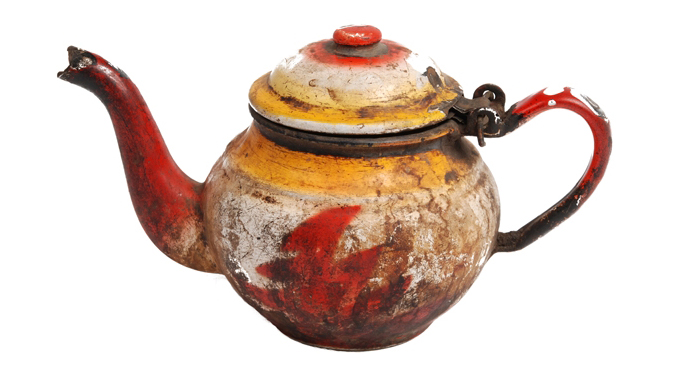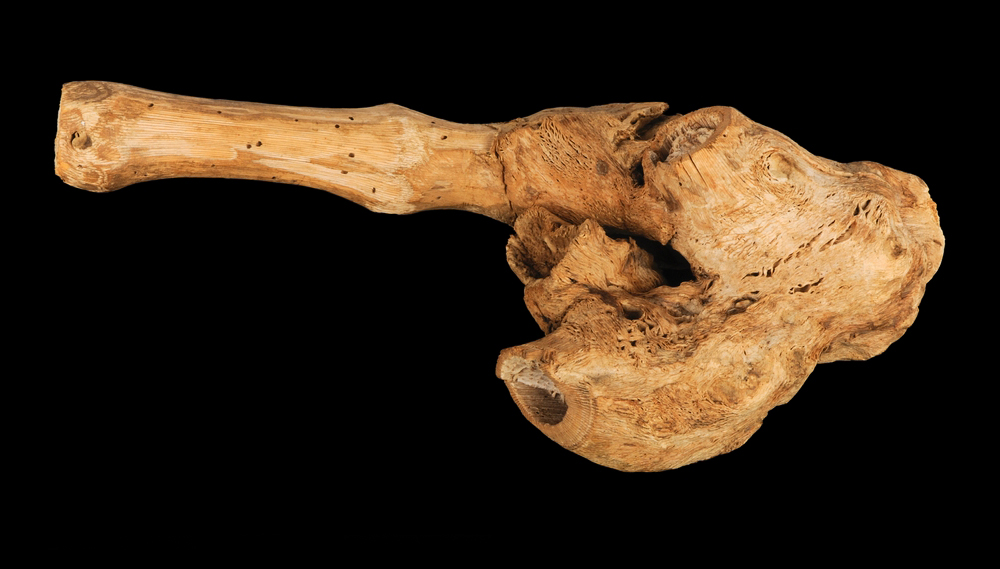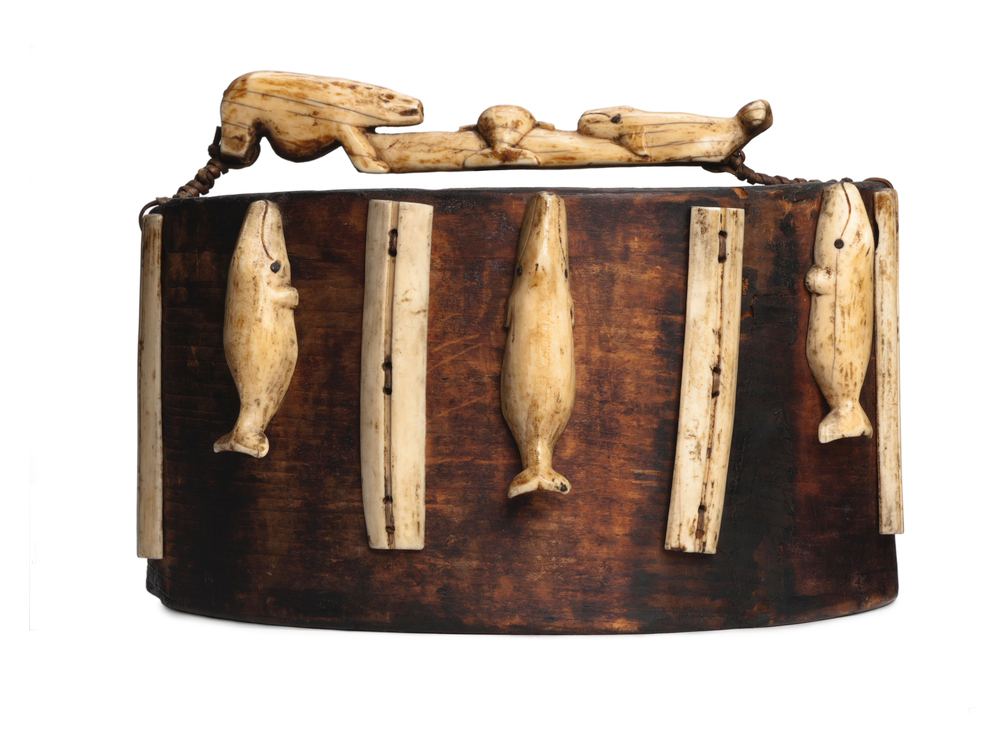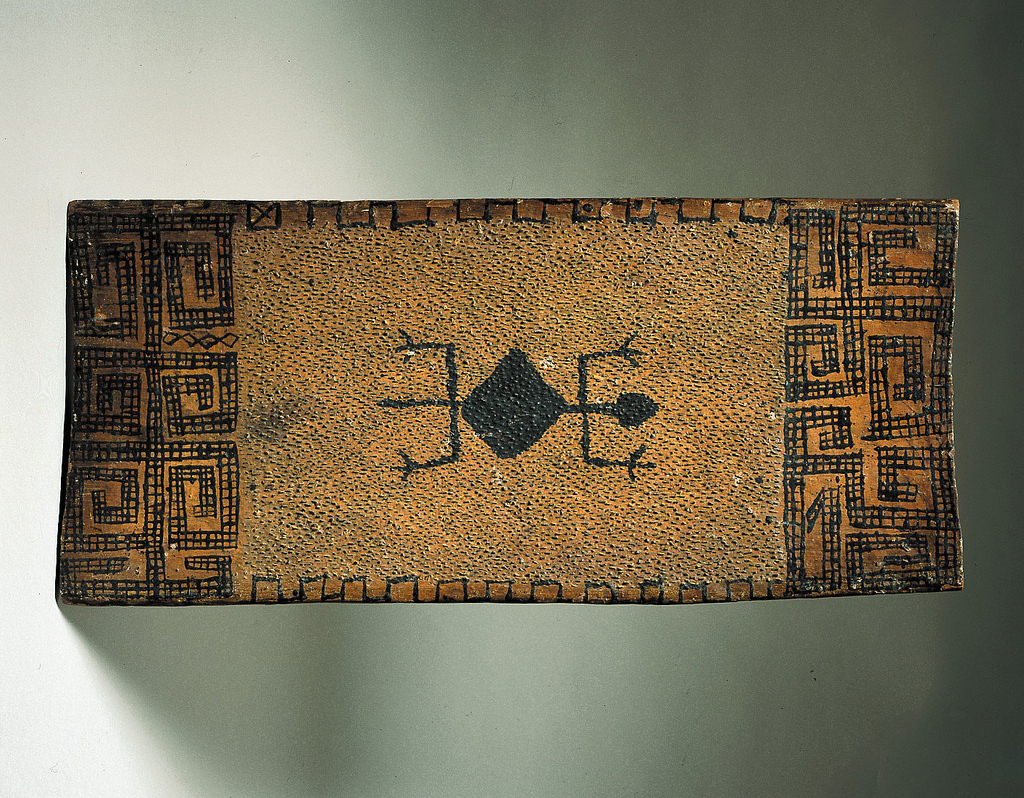In the World Gallery, you can get to know the everyday rituals and ceremonies about food from across the continents through more than 3,000 objects and stories.
Asia
In Tibet, tea and tsampa have become so iconic that the act of mixing the ingredients has its own sign in Tibetan sign language.
A main food source for Tibetan Nomads, salted yak butter tea and tsampa (roasted and ground barley), form a nutritious and revitalising porridge that can be prepared even in harsh weather conditions. For Tibetans living abroad, eating and preparing traditional food is a powerful link to their homeland.
Watch Shapaley’s music video about the iconic food below.
Africa
The Mbendjele people of the Congo region are hunter-gathers that have existed in the Central African rainforest for 40,000 years. Hunter-gatherers live on whatever the land provides and do not farm or grow food themselves.
The Mbendjele people believe that everyone is equal and live in a society that has no leaders, grand buildings or poverty. There is no word for ‘famine’ in their language as the forest provides every resource they need.
The Tuareg people are a diverse group spread across Algeria, Liberia, Niger, Mali and Burkina Faso. They call themselves Kel Tagelmoust, “People of the Veil.”

To show hospitality, the Tuareg have a ceremony of serving tea to visitors, which is drunk before and after work. Sugar is mixed into the tea (usually black tea) and sometimes mint. Often two teapots are used to mix the tea and sugar, pouring it back and forth from one pot into the other.
The tea is then served in small tea glasses. Three glasses of tea are usually drunk in succession, getting sweeter with each glass. The first one is bitter like life, the second one is sweet like love and the third is light like a breath of death.
Oceania
Across Polynesia, people share a similar understanding of mana as power, effectiveness and as prestige of divine origin. In Fiji, mana is often associated with chiefs and healers. Mana also exists within objects.

Drinking Kava is a major rite in all rituals and when receiving honoured guests. There are strict rules for the preparation of the drink and it is drunk in order of rank at chiefly rituals.
Kava is made from mixing the root of the Piper methysticum plant with water, in a special wooden bowl or tanoa. When drunk, kava produces feelings of calm and encourages contemplation and conversation. Kava has its own mana and is associated with the power of the land.
Europe
In villages across Poland, brown Polish bread is eaten with so many meals, it’s considered a national food.

At New Year, ritual bread called Nowe Latko (New Summer) are baked in north-east Poland. These breads hang in prominent places in the home, such as a home altar, to promote prosperity in the New Year. The dough would show a householder surrounded by geese, set on a magical ring to protect against evil.
In some places dough, cheese or gingerbread figures are made for special occasions. In the Zakopane area, Redykołka cheese figures were given to family members when shepherds brought their flocks down from the mountains to the village.
America
Our final stop is in the Americas, where we see that the special relationship the Arctic people have with nature and animals.
Providing essential energy to survive the extreme cold as food and as fuel for lamps, animal fat is one of the most important resources in the Arctic.

The bucket, pictured above, held blubber: fat from sea mammals. The decoration of carved whales, polar bears and seals shows thanks and respect to the hunted animals. The Inuit use every part of an animal and believe they possess special attributes, which enable them to survive the cold. Using the animal skins, women would use most of their time making clothing for the community.
Have you heard of the cassava root? It’s a starchy vegetable native to Central and South America that grows steadily in the Amazon rainforest.
The indigenous Waiwai eat lots of this vegetable but it has to be prepared properly, as it contains a poison called cyanide.
This cassava grater pictured below was made and used by the Waiwai people. It takes a long time to make, as tiny sharp stones have to be placed in to small holes in the wood, and then sticky tree resin is applied to hold everything in place.
Once the cassava has been grated, it is then placed in a squeezer to drain out the poisonous juices. Then the washed and dried cassava is used to make flour, which can be baked into large flatbreads.
All over the world, there are many different customs and rituals that happen around food. What are some of yours?
Learn more about everyday cultures in the World Gallery and on our YouTube channel. You can also download learning resources to help you navigate our World Gallery.



